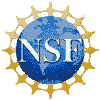0.1. CS3114 Introduction¶
0.1.1. Introduction¶
0.1.1.1. Introduction¶
What we are doing today:
- Administration stuff
- Course mechanics
- Course introduction (OpenDSA Chapter 1)
0.1.1.2. Administration stuff¶
Sign-in sheet (be sure to sign-in on one of them)
Get a copy of the syllabus
- Force Add System:
- https://www.cs.vt.edu/F16Force-Adds,
- Password: 3114cas#, 3114bap#
Consent forms (please return at end of class)
0.1.1.3. Course Mechanics¶
- Go over Syllabus
- Course online support: Canvas, OpenDSA, Web-CAT
0.1.1.4. Canvas¶
We will use Canvas
- Project specs and supporting documents
- Link to Piazza forum
- Post grades
- Access to OpenDSA (online textbook)
0.1.1.5. OpenDSA¶
- Access OpenDSA through Canvas->Modules
- Lots of visualizations, exercises
- Mastery-based approach
- Homework due most days before class
- Small homework due at 1pm this Wednesday (Chapter 1)
0.1.1.6. Web-CAT¶
- Get the updated plugin
- Project submission
- Support for junit testing
- Auto-grading: Correctness, style
0.1.1.7. Milestones¶
4 projects, each with a 3-4 week life cycle
- Most projects will have 3 milestones
- Intermediate deliverables with due dates
- First due at end of first week
- Second due about 2 weeks before due date
- Third due about 1 week before due date
Milestones designed to encourage incremental development
Last semester, milestones had the effect of boosting the final grade of the middle third of the class by about a full letter grade.
0.1.1.8. Course Introduction¶
Goals of this Course
Reinforce the concept that costs and benefits exist for every data structure.
- Learn the commonly used data structures.
- These form a programmer's basic data structure "toolkit".
- Understand how to measure the cost of a data structure or program.
- These techniques also allow you to judge the merits of new data structures that you or others might invent.
0.1.1.9. Role in the Curriculum¶
This course represents a transition between "learning to program" courses (CS 1114, CS 2114) and "content" courses.
- To do well, you must be able to handle both
- Programming (we focus on projects with dynamic memory allocation and file processing)
- Content, theory and analysis
The projects test programming proficiencies
OpenDSA exercises test knowledge of how algorithms work
Exams test understanding of the theory (analysis)
Note
Most graduates from our department will tell you that this is one of the two hardest courses, and also one of the two most important for job preparation. So its both high effort and high value.
0.1.1.10. Costs and Benefits¶
- Each data structure has costs and benefits.
- Rarely is one data structure better than another in all situations.
- Any data structure requires:
- space for each data item it stores,
- time to perform each basic operation,
- programming effort.
Only after a careful analysis of problem characteristics can we know the best data structure for a task.
0.1.1.11. Data Structure¶
- A data structure is the physical implementation of an ADT.
- Each operation associated with the ADT is implemented by one or more subroutines in the implementation.
Data structure usually refers to an organization for data in main memory.
File structure: an organization for data on peripheral storage, such as a disk drive.
0.1.1.12. Logical vs. Physical Form¶
- Data items have both a logical and a physical form.
- Logical form: definition of the data item within an ADT.
- Ex: Integers in mathematical sense: +, -
- Physical form: implementation of the data item within a data structure.
- Ex: 32/64 bit integers, overflow.
0.1.1.13. Logical vs. Physical Form (2)¶
0.1.1.14. Homework¶
- Look at Canvas
- Look at Piazza site, make sure you are enrolled there
- Look at Project 1 spec: Will discuss next time
- Do Chapter 1 exercises in OpenDSA by 1:00pm Wednesday
0.1.1.15. Before you leave today¶
Put your name and PID on sign-up sheet
- If you need to add the course:
- Log in to https://www.cs.vt.edu/F16Force-Adds:
- Password: 3114cas#, 3114bap#
Please return consent form


